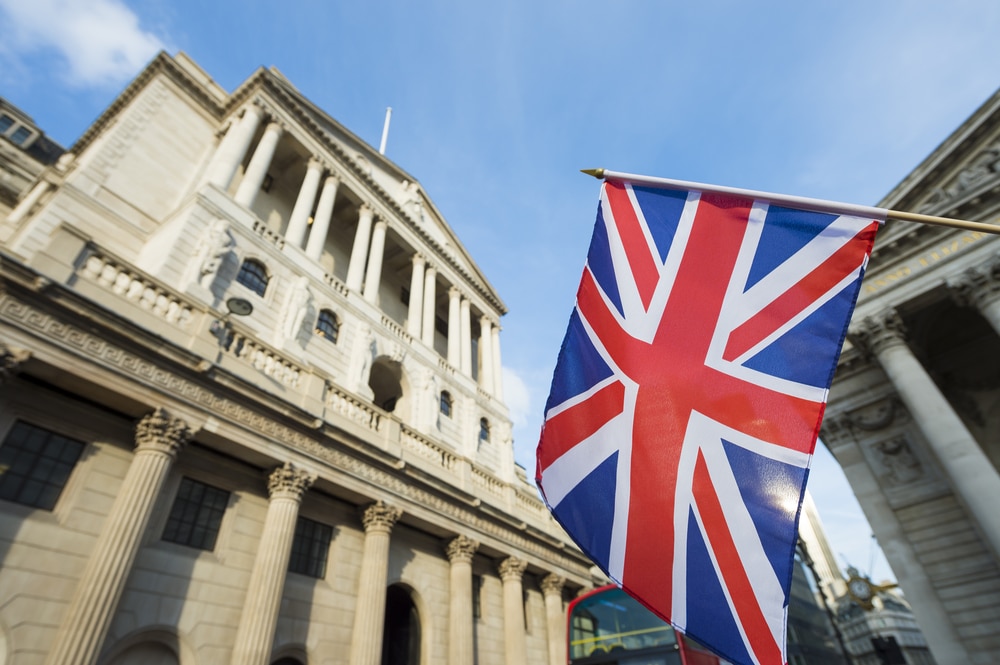
Bank of England Joins Blockchain Use Cases
Fnality’s new network for tokenized actual-world assets and wholesale payments depicts TradeFi’s constant utilization of blockchain.
This week, a liquidity management network for tokenized real-world assets and wholesale payments took a further step as blockchain technology utilization continues resonating around the space of traditional finance.
Examples of financial firms that participated in the new payment system unveiled by Fnality, a blockchain payments startup, include Banco Santander, UBS, and Lloyds Banking Group.
UK Central Bank to Embrace Distributed Ledger Technology
In a Thursday release, Fnality said that through the Sterling Fnality Payment System (FPS), the live payments were executed using the Fnality-held account within the real-time gross settlement service (RTGS). In April 2021, the United Kingdom central bank claimed it would permit RTGS to interface with additional payment systems, for instance, those utilizing distributed ledger technology.
The most recent payments indicate a future using new digital structures to permit transactions ‘in upcoming tokenized asset markets as well as wholesale financial markets.’ The unveiling happened after HM Treasury recognized the Sterling Fnality Payment System as a regulated payment in August last year. This brought it into the realm of the United Kingdom’s Payment Systems Regulator and the Bank of England.
In a statement, Angus Fletcher, Fnality UK’s chief executive officer, said that as they move to 2024, their focus improves on improving operations within an accepted and managed structure established by the Bank of England. Additionally, the focus entails steady progression toward unlocking more market use cases.
Fnality Realizes Financial Injection from Multiple Banks
In November, Fnality raised $95M from different banks, for instance, BNP Paribas, Goldman Sachs, and others. The startup makes major currencies’ tokenized versions. These currencies include British pounds, United States dollars, Japanese yen, and Canadian dollars. Additionally, they are collateralized via cash held at central banks.
The payments are the most recent example of blockchain technology’s prevalence in the traditional finance domain. For years, JPMorgan has been probing blockchain and tokenization initiatives, speeding up a collateral transaction between Barclays and BlackRock two months ago through a decentralized app.
In addition, JPMorgan recently introduced a programmable payments offering for blockchain-founded accounts on the permissioned JPM Coin System.
Samir Kerbage, chief investment officer at Hashdex, a Brazil-founded asset manager, said several major institutions are evaluating use cases of tokenization. He cited discussions with such firms. During a webinar on Wednesday, he said they are witnessing more of the use cases coming to market, mainly as they talk about tokenizing actual-world assets and introducing them to the blockchain.
Tokenization Seeks Marching Beyond Experimental Phase
During a separate Wednesday webinar, Carlos Gonzalez Campo, 21.co’s research analyst, said 2023 was an ‘experimental phase’ for tokenization. He added that moving on into next year, he believes what people can anticipate is more, shifting things into production and truly scaling it. He also said that some challenges, specifically cross-chain communication, will be encountered when attempting to achieve that.
Fnality said that The Bank of England will evaluate the Sterling Fnality Payment System’s earlier activities ‘against regulatory expectations as they shift to commercial operations.’ Despite a request for comment, a central bank representative failed to respond.
According to the House of Commons Treasury Committee, the Bank of England and HM Treasury must carefully take into account the introduction of a central bank digital currency (CBDC) in the United Kingdom. At the time, the House of Commons Treasury Committee said that a digital pound increases financial stability concerns.
After a three-month-long experiment with major banks, the New York Federal Reserve claimed in July that centralized blockchain payments could aid in addressing problems in the settlement process.




